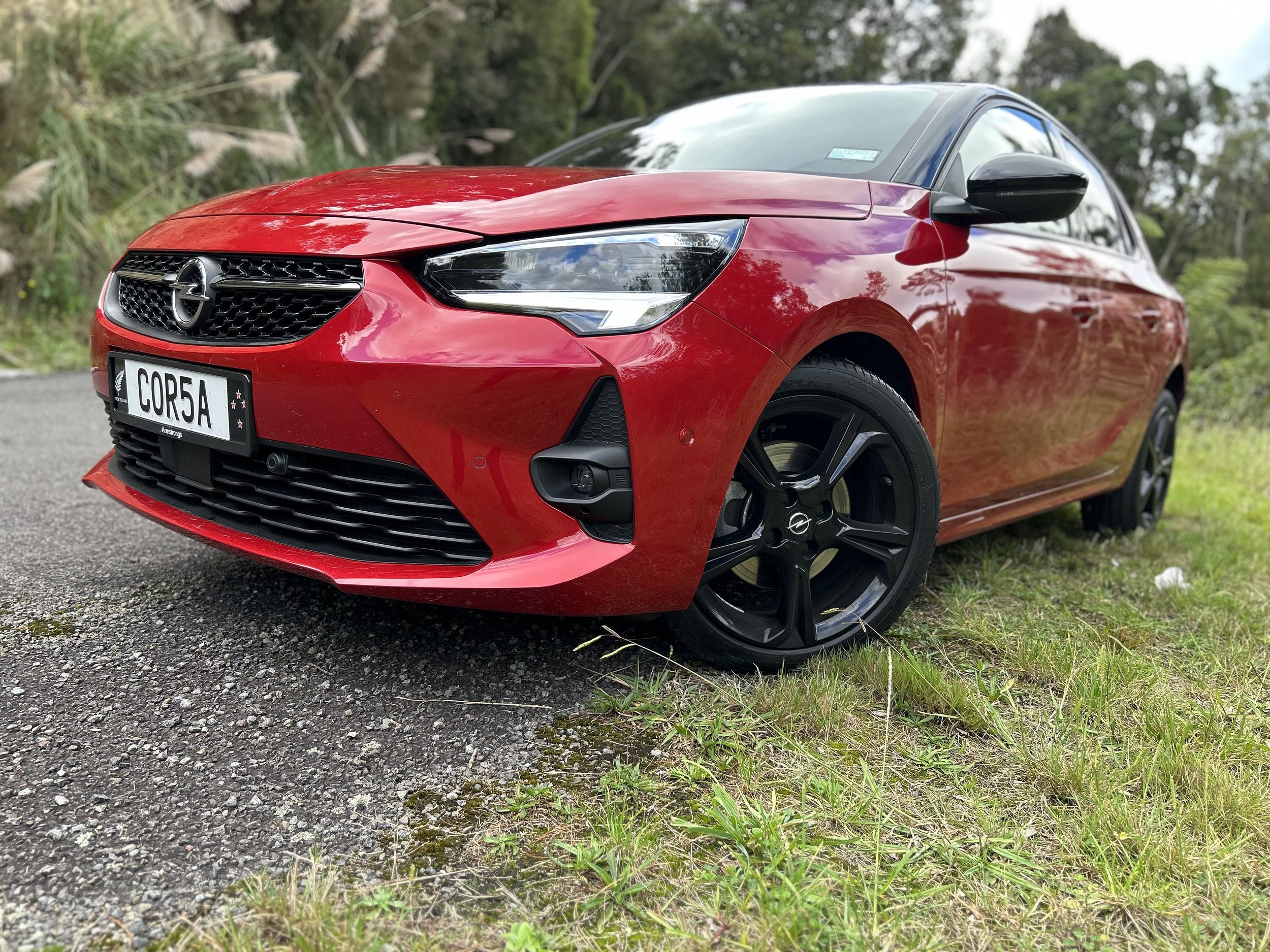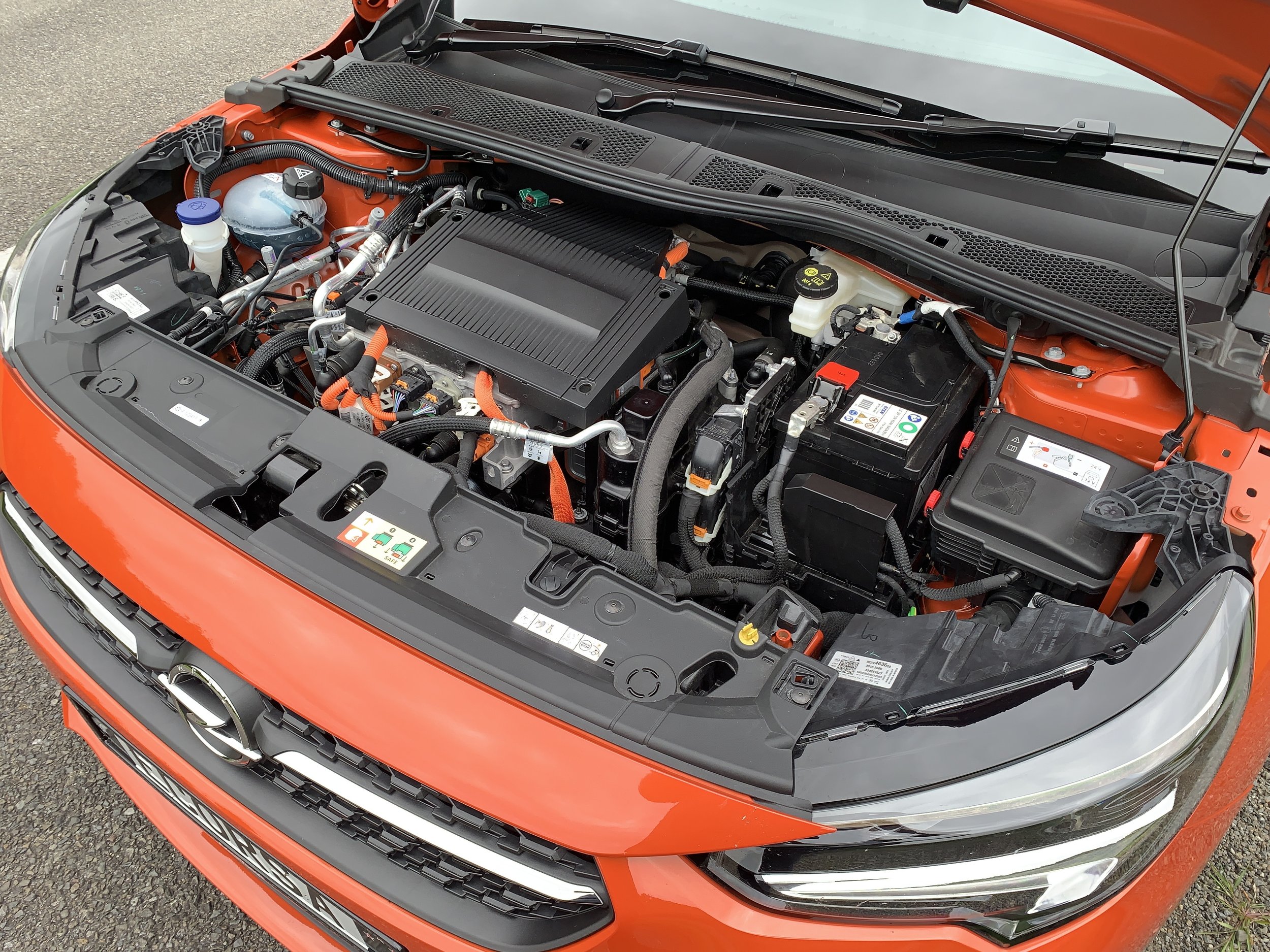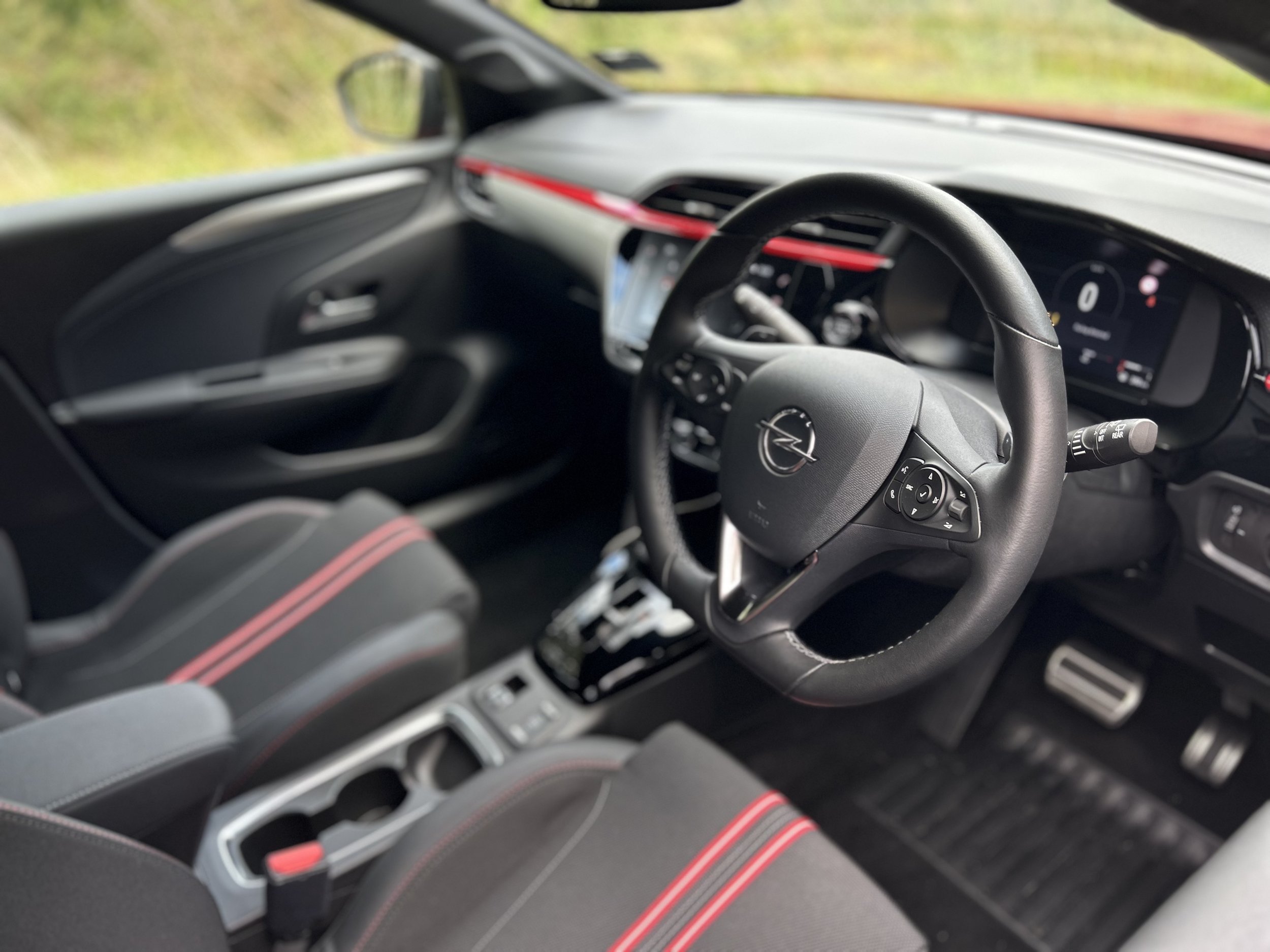Opel Corsa/Corsa-e SRi roadtest review: Starting small
/Placement as the quiet, more affordable understudy to the extrovert Mokka has been the gameplan for this small hatchback.
Price: $36,990 ($2438 rebate) / $59,990 ($8625 rebate).
Powertrain and economy: 1.2-litre turbocharged 3-cylinder petrol, 96kW/230Nm, FWD, claimed combined economy 5.7L/100km; Corsa-e, single electric motor, 100kW/260Nm, 50kWh battery, FWD, 6.2km/kWh.
Vital statistics: 4060mm long, 1960mm wide, 1435mm high.
Safety: Four stars NCAP.
We like: Sensible interior design, grown up driving feel, petrol edition’s pricing.
Not so much: EV edition’s position, confined cabin, small boot.
STILL thinking Opel is a new thing to get used to? Not so … it’s been here before, with highest profile accorded the Corsa, though last time it bore another badge and went by another name.
Conversely, only one generation of Holden Barina was Opel-born. It was the version that trumped a rebadged Suzuki Swift then was bumped out by a Chevrolet, from South Korea.
All history now. We’ve all moved on. Barina, Holden? Defunct. Likewise Opel as a General Motors’ asset. When America’s largest quit Europe it sold the German concern to PSA Group. You know all this.
What should also be recalled is that the first project thereafter was the car on test here. Closely related to the Peugeot 208 – as they are on the same Common Modular Platform – in dimension and role but hardly lookalikes.
Corsa’s an interesting dice roll. The latest addition to the small hatch category cannot be called the ‘newest’, since the design released in petrol form in 2017, a year before the last Barina ceased, with an electric adding 18 months later.
It has a look from that timeframe, but not for much longer. A big refresh already effected in Europe is en route, set to show before year-end. It’s a facelift in the truest sense: The car gets the attention-grabbing Vizor frontal styling that the big brother Mokka debuted and is now an Opel design trademark.
Corsa arrives into an interesting environment. We all surely agree that small hatches are great. And yet, we’re not buying into the concept as enthusiastically as we used to.
The evergreen Suzuki Swift aside, they’re becoming hard sells, to point some past champs have gone. Ford quitting the Fiesta and Volkswagen the Polo won’t have gone unnoticed by Opel’s head office in Germany – oui, croissants might now be on the canteen menu but they’re still there in Russelsheim, as is the factory – but what might help Corsa is that it not only configures with a perfectly able, highly amenable 1.2-litre three-cylinder turbo petrol, but also fully electric, with a 50kWh battery and 80kW/220Nm motor also used by (no prizes for this one) …. the Peugeot e-208. Straight away, that makes it special: It’s great that a maker can see a chance for electric to work out in usefully small car, instead of the ubiquitous large SUVs makers are prioritising.
Opel, Citroen and Peugeot distribution rights are in common hands here but each runs its own game. Germany wants the Opel effort to succeed so has okayed some dramatic pricing strategies. Accordingly, Corsa is far from friendly to the French product, with aggressive positioning.
Opel’s attraction is that while the electrics are more comfortably more premium than the petrols, you’re still getting this Euro tech for less; between $3000 and $5000 in comparison with the 208/2008 even before Clean Car rebates.
The battery-pure car, the orange one here, achieves the full $8625 electric vehicle return but the SRi petrol, provisioned in red, also wins Government money. The latter’s $2438 rebate cheque is a generosity not availed the Peugeots because, even though their engines are identical, transmissions are not. Opel has a new automatic, with eight speeds, which allows for lower CO2, not introducing to local, currently six-cog PSA fare for a bit longer yet.
Everyone’s thinking electric these days, but will they automatically consider Corsa-e? Cost competiveness doesn’t mean outright cheap when you’re buying battery pure. In leaving just $10 change from a $60k spend, prior to the fat Clean Car discount, Opel’s battery babe is – yes, best sit down for this – a full $23k dearer than the petrol equivalent. It’s also price aligned with the larger, crossover-themed BYD Atto 3 and the MG ZS and, we now know, sits higher than the incoming MG4.
That’s all irksome. The curve ball no-one expected - Opel’s determination last week to discount, if just for a limited time, in-country Mokka-e stock so that it’s effectively cheaper than the smaller car – is far more of a challenge. As said, the discounting is only a short-term thing, yet surely it has to make life tough for the little guy.
On that matter, you’ll know Mokka and Corsa have identical underpinnings, same drivetrains and operabilities and are very close for performance and economies.
For all the commonality, they’re quite different in their feel and function. In terms of kerbside appeal, the Mokka of course imparts as a bolder, more party-set personality. How could it not? It’s such a dynamic looking car. Whereas the Corsa is … well, let’s settle on it being quite ‘mature’.
Beyond that, though, as much as they are both small cars, the Corsa imparts as the cosier choice; you’re talking compact versus supermini. Does that make it a more city-centric choice, too? That’s probably an over-simplification, because European brands are so good at creating baby cars with stout-hearted hunger for prolonged open road running. Opel’s fare imparts that air of confidence.
Yet, all the same, if it came to picking between just those two for a distance drive, it’d be the Mokka. Mind you, if the choice then had to be electric or petrol?
Well, if you’re pushing, the EV might as well stay at home … there’s a lot less downtime faffing with petrol. It won’t even need consider refilling until it’s clocked north of 500kms and, when it does need a drink, that’ll be sorted in minutes. The electric, despite brand claim of 324kms’ range, will be lucky to see 300km – and that’s in optimal condition. Make it work, or strike cold conditions, and there’s less. Then you’re facing the best part of an hour on even a fast charger getting it back to sorts. Because of this so much points to it shining brightest when retained for urban and inter-urban running.
Which isn’t a criticism per se. So it goes with all small to medium EVs. Big drives ask for big batteries. As a daily drive, used for mainly short runs often with quick fire replenishment within that frequency, Corsa-e would be a star.
But back to the look. The car as we see it for now is purely a result of it being a premature birth. Release after PSA bought Opel allowed it to divest GM underpinnings but not GM design. As said, it’ll soon at least have the Mokka look, around the front, and that could be a big lift. Opel’s out to capture young drivers; Vizor stands good chance of doing just that.
As things stand, even when equipped with some fetching looking alloys (as seen on the petrol one) and meted a loud paint colour it’s far from shouty.
Maybe that’s not necessarily a bad thing if you are in that clique with preference for a ‘quiet’ looking electric.
On that point, apart from the badgework, you won't notice a great deal of visual difference between the Corsa-e and its combustion sibling. It’s the same with the two versions of Mokka, but with a twist. Whereas the first just looks like an electric car – to point people are surprised it also provisions in petrol - with Corsa there’s disbelief about it having battery choice.
Everything becomes clear once you’re driving, though even before then you’re aware of which is which, as the battery model’s cabin divests renders its Drive selection down to a minimalistic giant switch.
I’d accept argument Corsa lags behind the equivalent Peugeot for outright design flair within the cabin, but the overall quality of the materials inside is decent. I’m a fan of the Opel going with a conventionally sized multifunction steering wheel and a conventional driving position. Its touchscreen is less fiddly to work with than the one setup Peugeot prefers, mainly because it’s more old-school. A knob for volume control and two more for the climate controls more seem old-fashioned, but they’re appreciated when you’re forced into to divert full attention to driving for sake of a dep dive into touchscreen sub-menus, simply to bring up the sound, change an audio select or re-set the cabin temp. Corsa’s instrument display isn’t huge, but it also presents information coherently.
Insofar as space goes, Corsa feels more confined than the already space-limited Mokka; usual thing - all fine up front, it’s the rear area that’s tight, for rear leg room in particular. Accommodating four adults is possible, but not without compromise. Such is the way.
The petrol offers a bit better boot space, due to how the battery is packaged within the electric. Though the boot area above this matches the regular Corsa, it comes to only 267 litres’ space, capacity increasing to 1042 litres when the rear seats are tipped forward, but it could be stretched by a big Saturday morning splurge at Bunnings.
Don’t think of it as a poorly runt, all the same. Regardless of its dimension, away from city stuff and out on the open road in either format Opel’s baby imparts the usual sense of substance expected of Euros; it feels solid, retains a sense of pace and will comfortably cruise at the speed limit. The electric powertrain is quiet, the petrol has a nice element of mischief to its note.
That the electric has a more settled, slightly less lively feel is understandable. It’s hauling significantly more weight. The battery itself weighs 345kg, so the springs are different to manage that. In respect to the suspension tuning, I suspect that in any back-to-back comparison, the 208 would feel more effervescent. That’s just the French way. Between the two kinds of Corsa, it’s evident the battery one leans more and requires more braking room.
As said, range-wise, there’s no question the petrol is the one that’d ask for less fussing with; it’s a typical mighty-mite matched to a nicely-calibrated transmission. Not that thirsty, calibrated to evidence great spirit.
The electric also has verve, though the degree depends entirely on the Drive setting. In the default Normal drive mode the electric motor provides 80kW and 220Nm, which is plenty for urban driving. So, in fact, is Eco mode, which dulls the throttle and taps the delivery back to 60kW power output, but also works more assiduously at harvesting back some energy into the battery. Pulling the drive selector into the 'B' mode more than doubles the braking effect and is close enough to one-pedal driving. The Sport mode gives you the full 100kW and 280Nm, sharpens the throttle response and weights up the steering.
The petrol Corsa is priced to sell, and looks like good buying, but it’s the electric that is obviously set up for the long game of a radscape packed with electron-reliant products.
Even though it leaves impression of being aimed at those who like the idea of an electric, but don't necessarily want to be loud about it – so, exactly the anthesis of the Mokka, then – the Corsa-e is an interesting car, but not as wholly intriguing as it could be. The facelift could be all it needs to move from the staid end of the spectrum; that refresh also delivers a more energetic drivetrain with improved efficiency.
With the original pricing scheme, there was enough clear air between the Corsa and Mokka in electric format for both to make some degree of sense. The cheaper quiet competence in a quietly handsome package; the other was all about flair and fun, with a fat premium.
The Corsa-e isn't perfect in every way and isn't the cheapest electric hatch on the market, but it’s still a likeable wee thing. Even so, current price repositioning, and some vagueness about where it might place after the special pricing period ends, makes me think the Mokka-e SRi stands as the more welcome addition just at the moment.

























